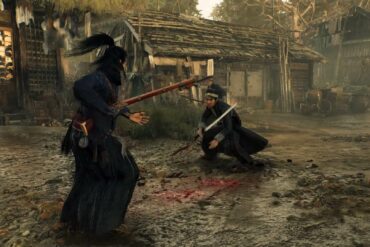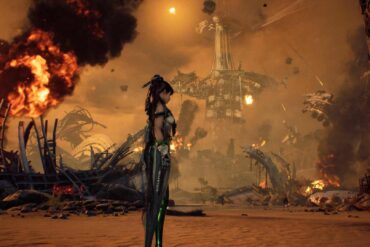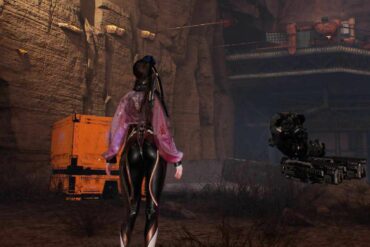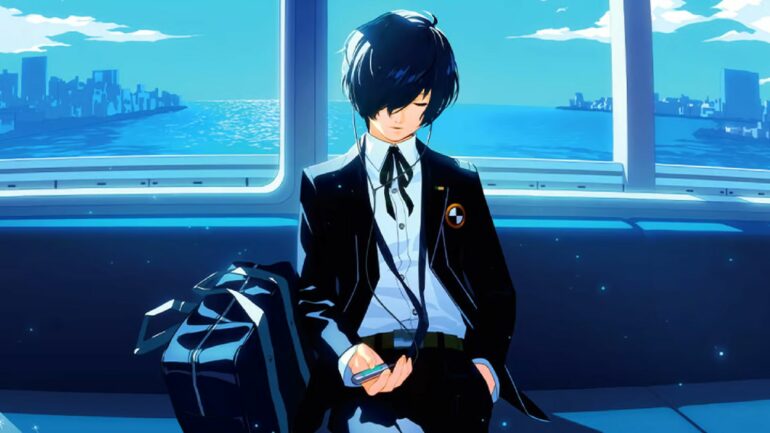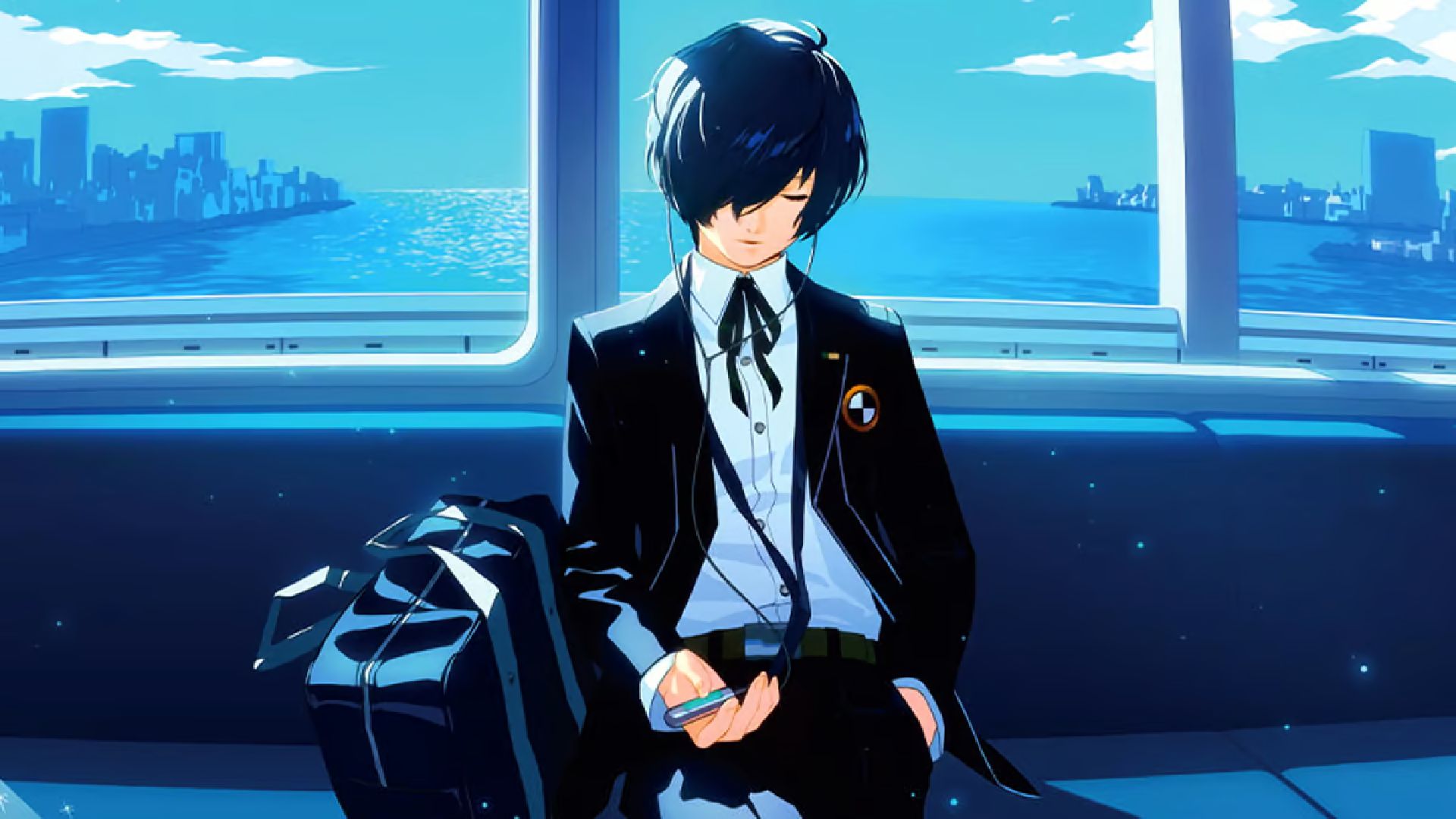When I was in the prime of my youth, JRPGs were not on my radar. Fortunately, my younger sibling absolutely adored them, and as I hacked and slashed zombies in Dead Island, I heard the smooth-as-hell (for there is no better word to describe it) soundtrack of Persona 3 Portable over the struggling fans of their PSP. Since those halcyon days, I have come to love JRPGs, preferring to sink 100s of hours into their sprawling worlds and awe-inspiring narratives whenever I can.
Yet, I never touched Persona 3, perhaps due to its somewhat dated graphics or because navigating which version I should play is like trying to get into Ghost in the Shell. So, when I learned that a remake was released, something that somewhat promised to be the definitive version, I was elated. Finally, I would have context for that phenomenal soundtrack and could comprehend the passionate chats I had with my sibling about the intricacies and complexities of its narrative. Now, having sunk more hours than I have the stomach to count, I can safely say that the wait was almost worth it.
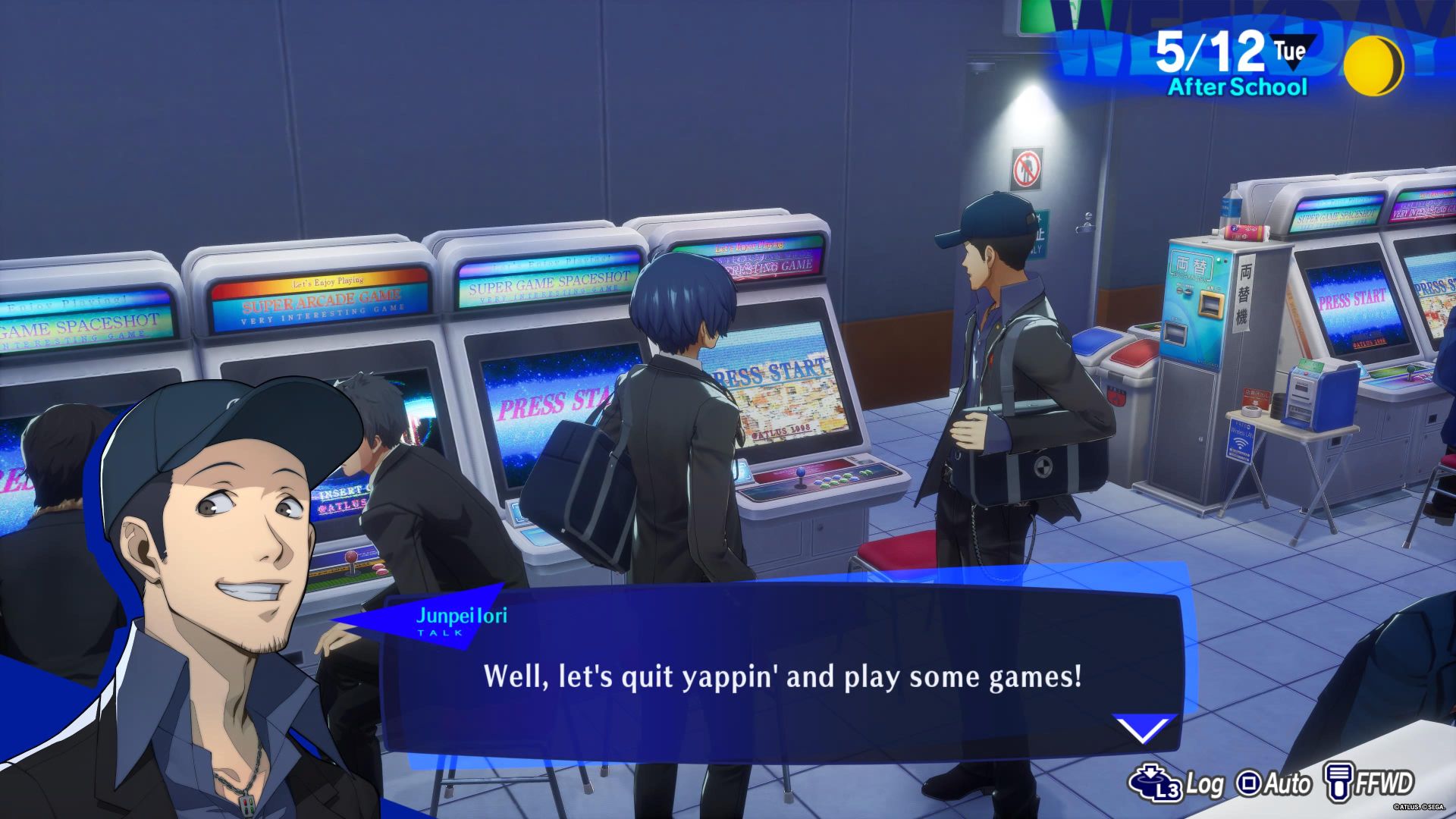
“Persona 3 Reload’s narrative is exceptionally well-told, thanks to its excellent writing and voice acting.”
Persona 3 Reload largely follows the same story as the original game, albeit with vast improvements in certain areas. This is a deeply complex narrative, one that takes the high school setting and explores its darker aspects, spotlighting the twisted nature of bullying, the extraordinary amount of pressure students go through, and the mental health struggles that arise from both.
It’s also intrinsically about death, the ever-looming existential crisis that presents itself as both a narrative function and a mechanical one, pushing you to think carefully about how you wish to spend every day. There’s a genuine bleakness to a lot of Persona 3 Reload’s story that’s also very much present in its side characters and stories.
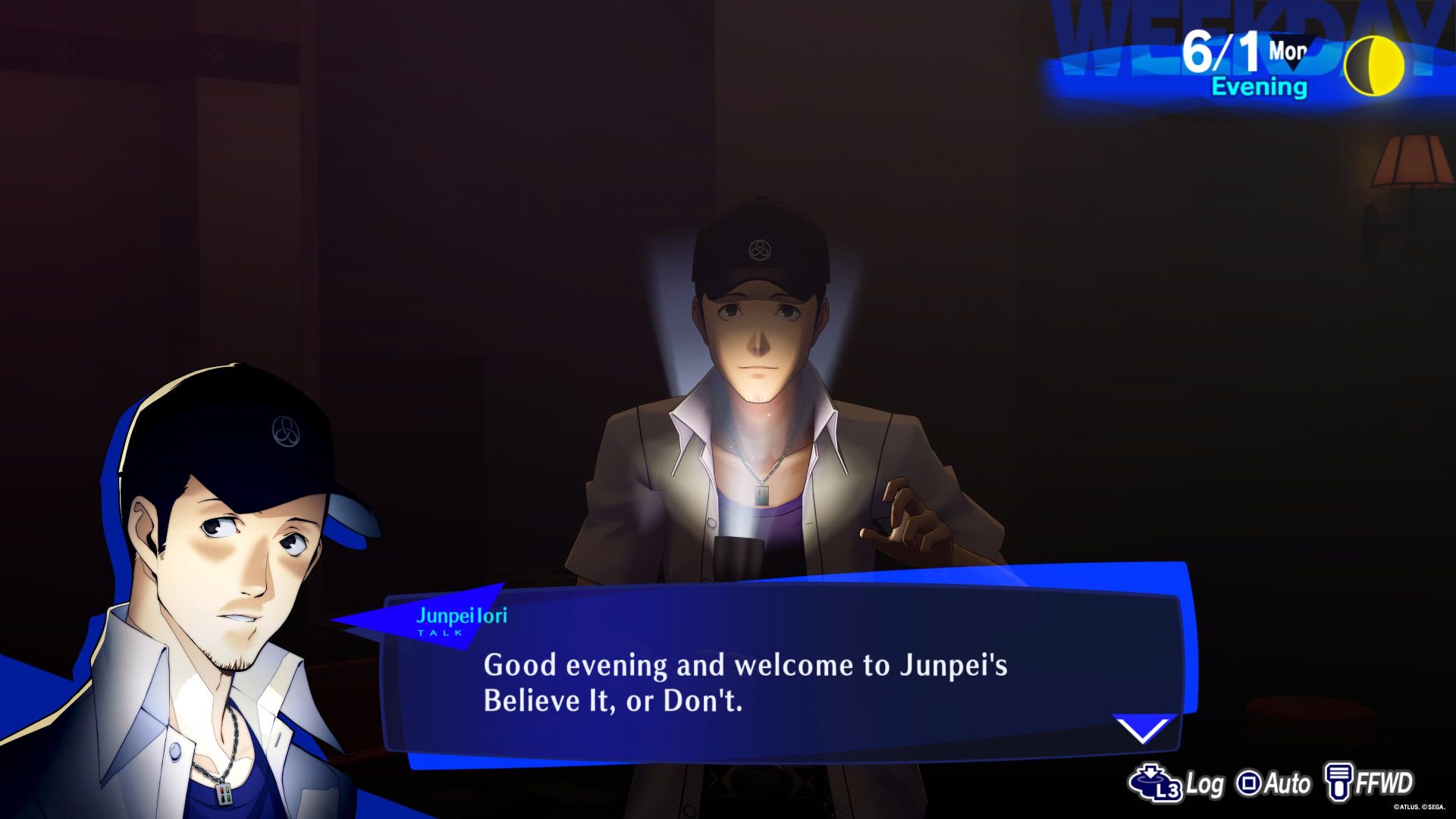
Fortunately, it’s handled with the respect and care it deserves, even if there is some questionable and slightly outdated content that feels as if it should have been left on the cutting room floor. Nevertheless, it is an exceptionally well-told narrative, thanks, in large part, to its excellent writing and voice acting, which deftly balances the game’s somber nature and delightful sense of humor, as well as its compelling structure.
Much like the incredibly popular Persona 5, Reload tells its story in segments. However, unlike Persona 5, these segments seamlessly blend into one another, rarely feeling like the narrative stops and starts unnecessarily. Characters who are important at a later stage are introduced much earlier in the game, so you don’t feel as if they appear out of nowhere. Similarly, story elements are woven naturally throughout, ensuring a constant sense of cohesion that I greatly appreciated.
“The lack of The Answer, coupled with the missing female protagonist, makes Reload’s narrative feel somewhat incomplete.”
While Reload doesn’t change the original’s core narrative a great deal, there are some noticeable differences, especially when concerning the other members of S.E.E.S. These are the protagonists who will not only aid you in combat but see you through your midterms via study sessions and sit down on a rainy weekend to watch DVDs together. They’re your friends throughout this entire adventure, and the greater focus on them and your relationship with one another was a significant highlight.
Of course, it bears mentioning that The Answer, a large part of the FES edition of Persona 3, is entirely absent in Reload. This, in conjunction with the missing female protagonist, makes Reload’s narrative feel somewhat incomplete. One can only hope that they will be added as DLC to make this feel like the true definitive version fans have been wanting for years.
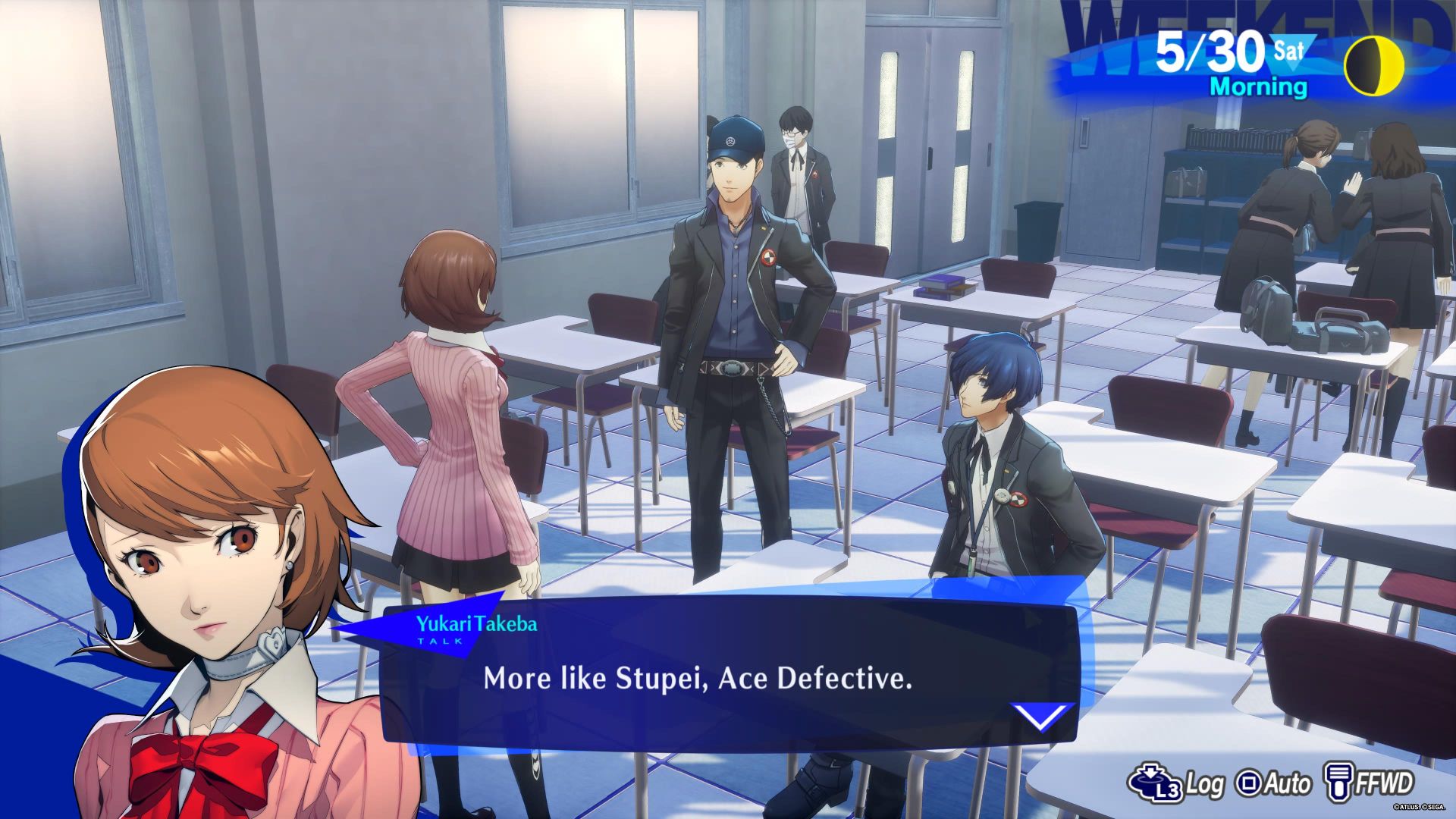
“The Social Links are almost worth playing the game for alone, as the way they manage to explore the deeply personal struggles of each character is undeniably captivating.”
When you’re not grappling with the existential crises of the main story, you’ll be building up your Social Links. These are essentially side stories that tie directly into powering up your Personas and thus make you stronger in combat. There’s a huge number of Social Links to max out, with each one segmented into several encounters that you’ll need to earn by hanging out with each character. Ultimately, there’s no way to complete them all in one playthrough, forcing you to prioritize certain characters over others, either out of genuine curiosity to see their stories through or to improve a certain type of Persona.
The majority of these Social Links are definitely worth pursuing as they involve a compelling character backed by a rich narrative that unfolds and grows in complexity the more you rank up. These Social Links are almost worth playing the game for alone, as the way they manage to explore the deeply personal struggles of each character, as well as societal issues, is undeniably captivating. Even early on, characters such as Kazushi Miyamoto, Yuko Nishiwaki, and Mitsuko and Bunkichi all offered gripping and engrossing stories that I found myself genuinely excited to pursue whenever they became available.
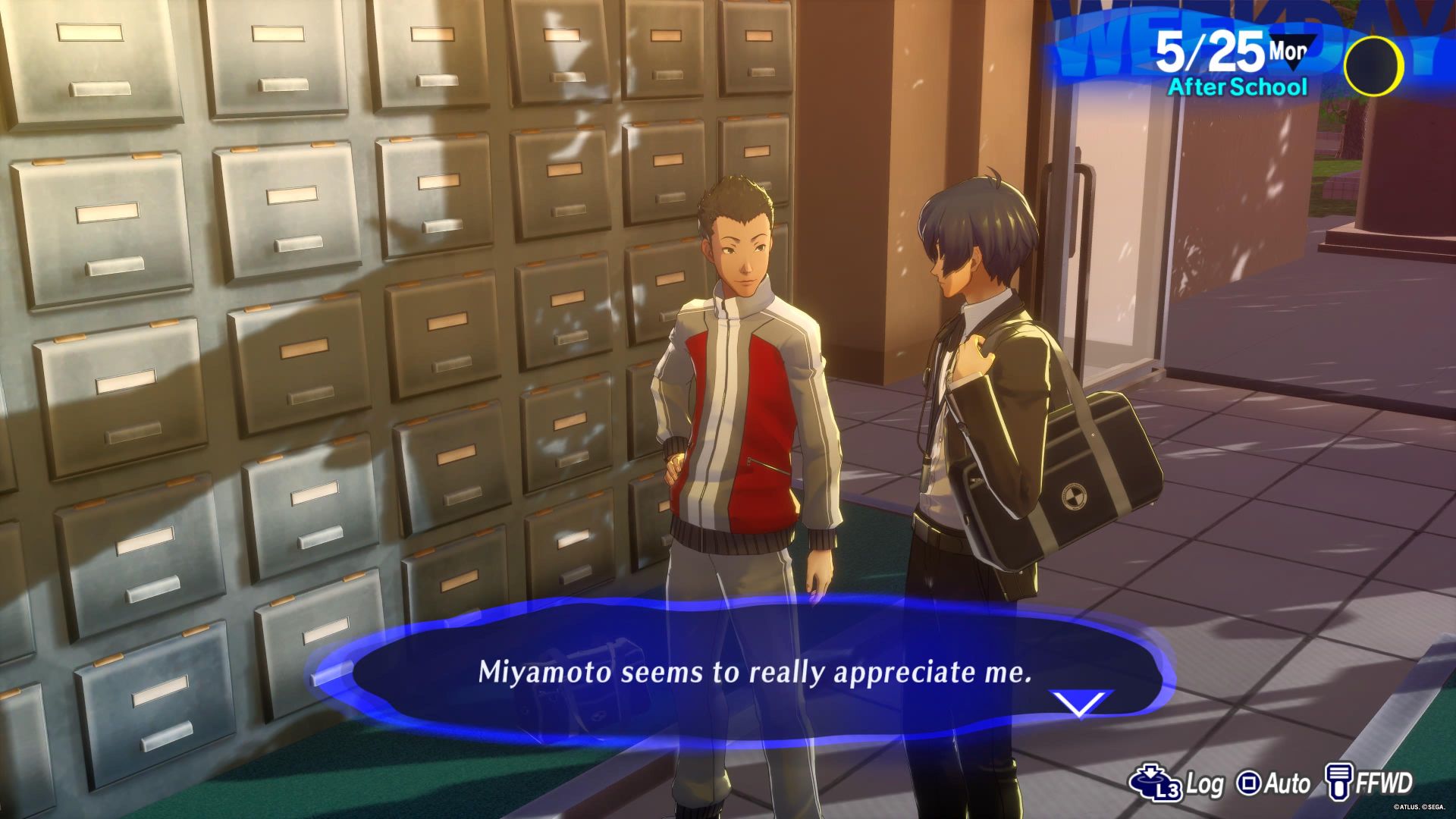
Unfortunately, not all Social Links are made equal, and there are some that are slightly less interesting. I found a handful to not feel as worthwhile, offering less compelling reasons to care or simply taking too long to get to the more nuanced aspects of their character. However, considering just how many there are, in addition to their optional nature, it’s hardly surprising that not all of these are worth your time.
“The rote nature of your routine, coupled with the gorgeous art direction, helps to create a cohesive sense of space.”
Persona 3 Reload’s gameplay loop is split into two. The more engaging half is the exploration and life-sim elements that see you venturing across Tatsumi Port Island, picking up part-time shifts, watching movies, and hanging out in clubs with weird old monks. Engaging with these tasks will build up your Social Stats, which are needed to unlock Social Links and access new areas. As such, you need to pick what activities you want to partake in, not simply because you’re limited to two a day but also because focusing on one stat will unlock certain content and ensure you miss out on others.
However, while there is plenty of choice of what to do, it does end up feeling a little rote. You’ll fall into a routine, prioritizing specific locations and activities on certain days to maximize your Social Stat gains. It can, occasionally, feel more like a grind rather than an immersive life sim. Fortunately, it’s easy to breeze through this content on your way to unlocking new areas. Reload has streamlined much of Persona 3’s life sim elements, namely by texting you when Social Links want to meet up or when job opportunities arise. This lets you immediately fast-travel to those locations, saving you the hassle of manually visiting every cafe and store.
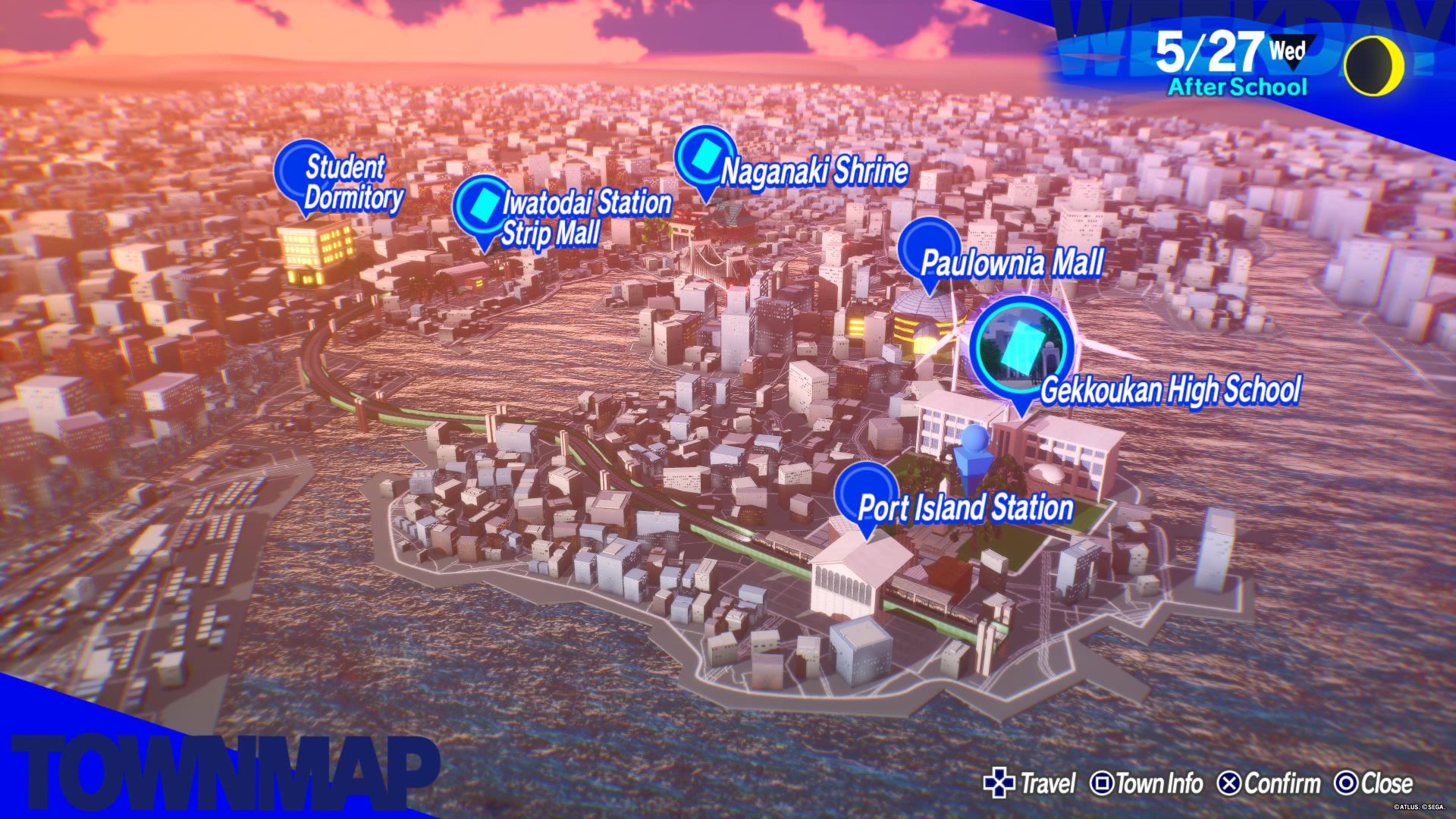
Regardless, Persona 3 Reload’s world proves to be an incredibly engaging place. This isn’t an open world, nor is it a series of interconnected locations like in Persona 5. Rather, you’ll explore each highly detailed environment before heading back into the world map screen and picking another to visit. The rote nature of your routine, coupled with the gorgeous art direction, helps to create a cohesive sense of space, one that makes Tatsumi Port Island feel like a believable and lived-in place.
“Despite being turn-based, much of Reload’s combat feels as fluid and fast-paced as any action RPG.”
The other half of Persona 3 Reload is combat and exploring the ever-changing procedurally generated Tartarus dungeon. Firstly, let’s discuss combat, which is as triumphant and stylish as it is in Persona 5. This is a turn-based RPG, one in which you use an ever-growing list of Personas to deal elemental damage. Each of the huge roster of enemies you’ll encounter in Tartarus is weak to one element or another, and it’s your job to figure out which.
Despite being turn-based, much of Reload’s combat feels as fluid and fast-paced as any action RPG. This is, in large part, owing to the game’s immaculate sense of style, which lends itself beautifully to the bombastically explosive animations. Fortunately, this does not come at the expense of strategy, as Persona 3 Reload sees a number of new features that greatly elevate how you approach each encounter. Much like the Baton Pass move in Persona 5, Reload allows you to Shift to another character when you stun an enemy. You can essentially cause a chain reaction of damage, defeating all of your enemies before they have a chance to strike.
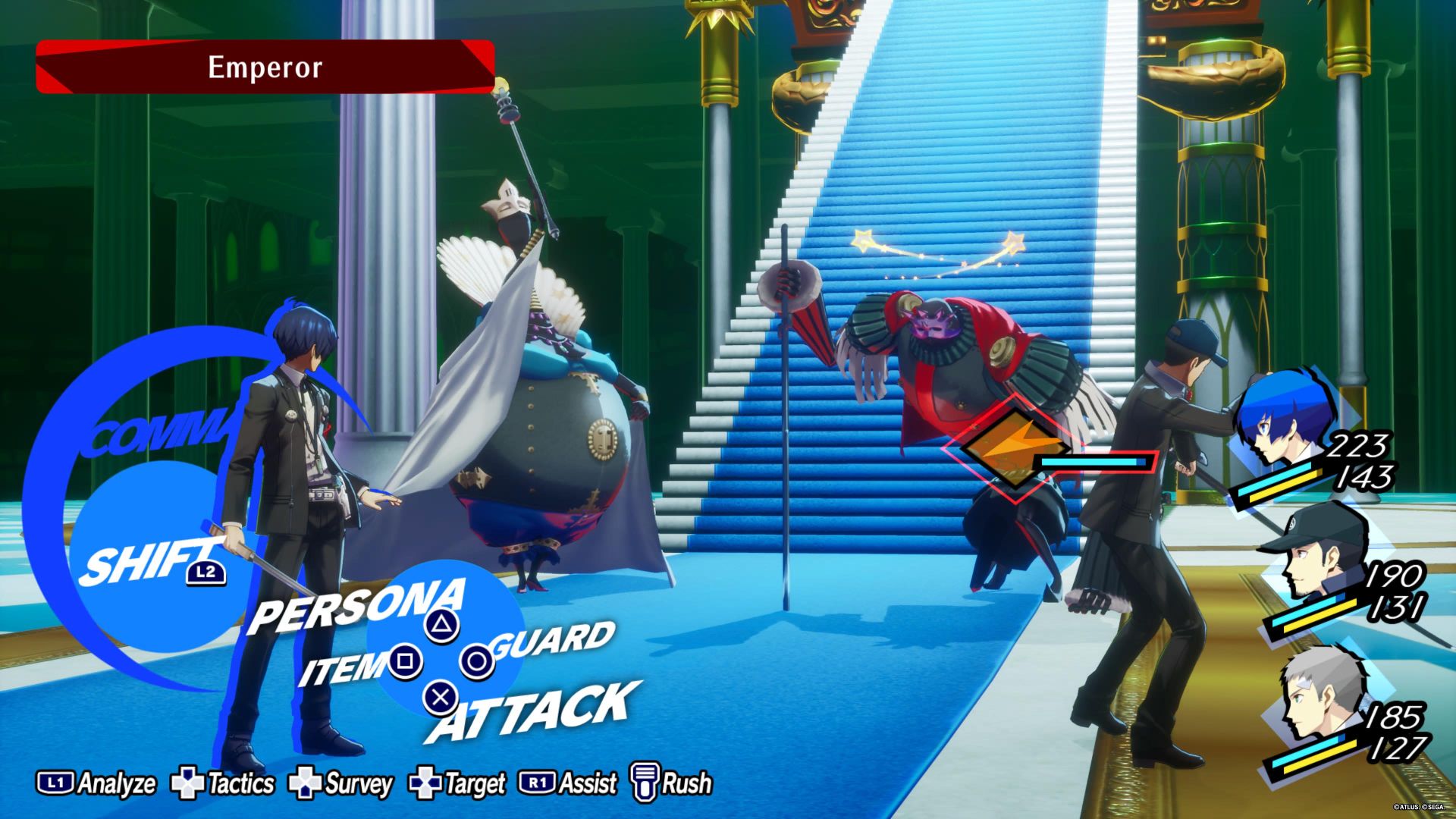
Combat in Persona 3 Reload absolutely never gets old, especially with the frequent introduction of new Personas. You’ll unlock them through Shuffle Time, a randomized event that occurs every so often after a battle. During Shuffle Time, you’ll get the choice of three bonuses, usually additional XP, a new Persona, an item, money, or healing your party. It’s a fun bonus that helps make exploring Tartarus a little easier and also simplifies the somewhat tedious process of unlocking Personas present in Persona 5.
“Atlus missed a great opportunity to revamp an absolutely atrocious aspect of an otherwise incredible experience.”
Unfortunately, while combat is an absolute blast, exploring Tartarus is not. In fact, not only is it the game’s greatest flaw, but it’s also a mind-numbingly excruciating task that is almost bad enough to make recommending Persona 3 Reload difficult. Fortunately, the emphasis is on almost. Tartarus is a holdover from the original game and is where the majority of combat takes place. It’s a 200+ floor dungeon that’s built up of randomly generated floors. You’ll explore 20 or so floors at a time before you’re blocked and can only progress after reaching a certain date.
The biggest issue with Tartarus is its procedurally generated floors, which are all entirely identical to one another save for a new coat of paint every handful of floors. Despite procedural generation coming so far, somehow, Tartarus feels like an early prototype. Its foundation is so inherently flawed, as it seems to copy and paste the same group of tilesets per floor, making absolutely none of them distinct in any shape or form.
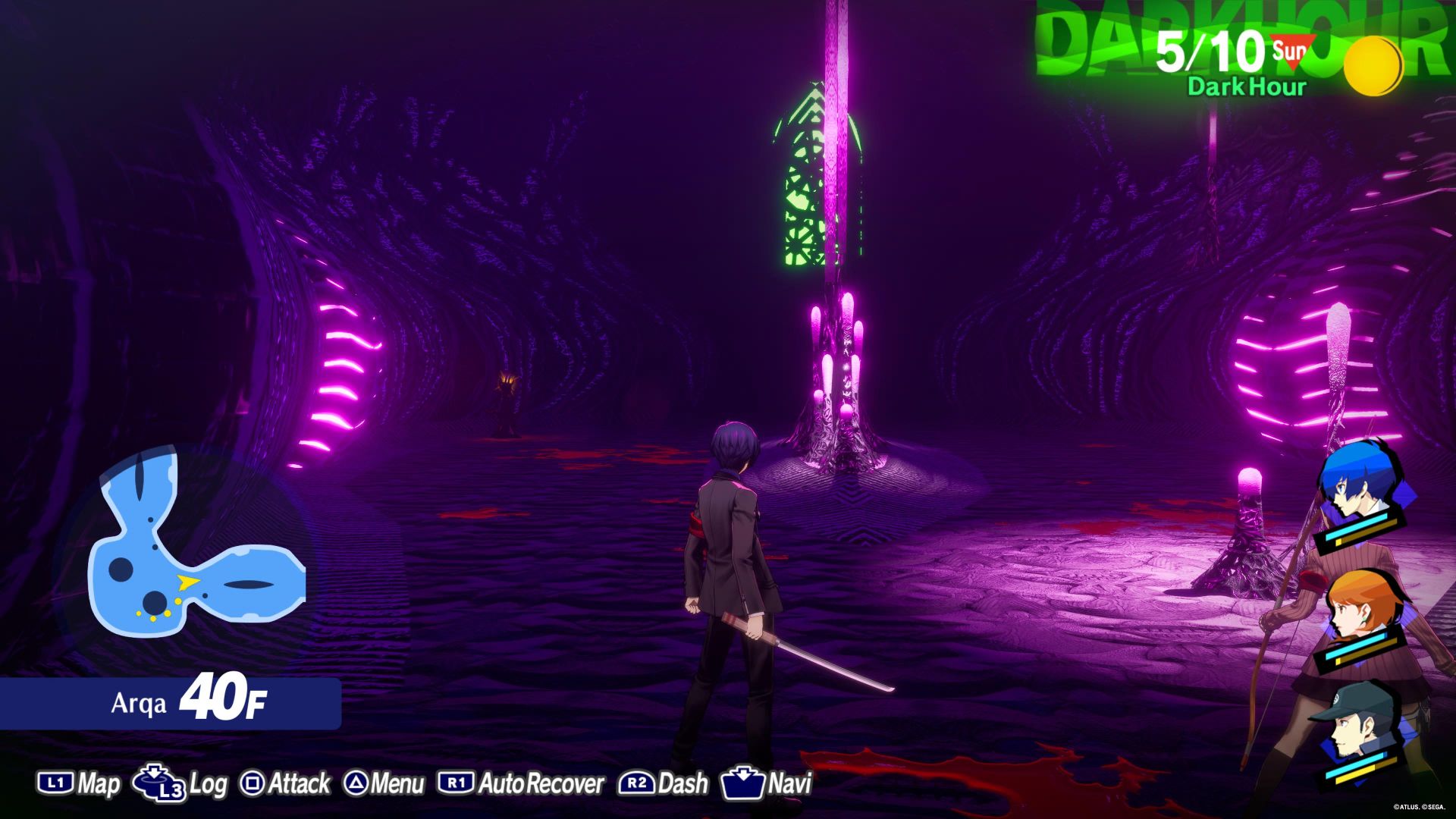
The only distractions you’ll encounter while exploring are chests and enemies, at least early on. Eventually, new challenges, such as stronger enemies, will appear, but these only serve to extend your time in Tartarus. Fortunately, you can grind all available floors in one go until you reach the next blockade. This is probably the best way to get through Tartarus, but it does mean being stuck in it for an hour or so at a time. To make matters worse, despite the game having an absolutely incredible soundtrack, the Tartarus theme is so mind-numbingly repetitive that I had to play without sound on whenever I was exploring it. Suffice it to say, Atlus missed a great opportunity to revamp an absolutely atrocious aspect of an otherwise incredible experience.
“Persona 3 Reload’s soundtrack does an admirable job of imbuing every location with a sense of joy and intensifying the emotional core of each dramatic cutscene.”
However, where Atlus has absolutely succeeded in revamping Persona 3 is in its visuals. Reload is a gorgeous game, with a strong art direction affording its almost ethereal-esque urban environments to pop. While the striking lighting effects do much of the heavy lifting when it comes to making Persona 3 Reload truly shine, the way Atlus has managed to transform the original’s PS2 environments into highly detailed life-like spaces is absolutely remarkable. There’s a density to each place, from both a population standpoint as well as in terms of sheer detail, making every location well worth visiting.
It also helps that the character models and their respective dialogue portraits look incredible, truly bringing to life the game’s huge roster of characters like never before. As aforementioned, the sumptuous animations in combat breath make its turn-based action feel radically more dynamic. Even the character icons have fun new animations whenever someone is stunned or suffering from a status element. Frankly, the highlight of Reload’s new visual style is the menus, which ooze with an insatiable sense of style. It is the first time where I’ve truly delighted in scrolling through endless menus to kit out my characters with new gear and items.
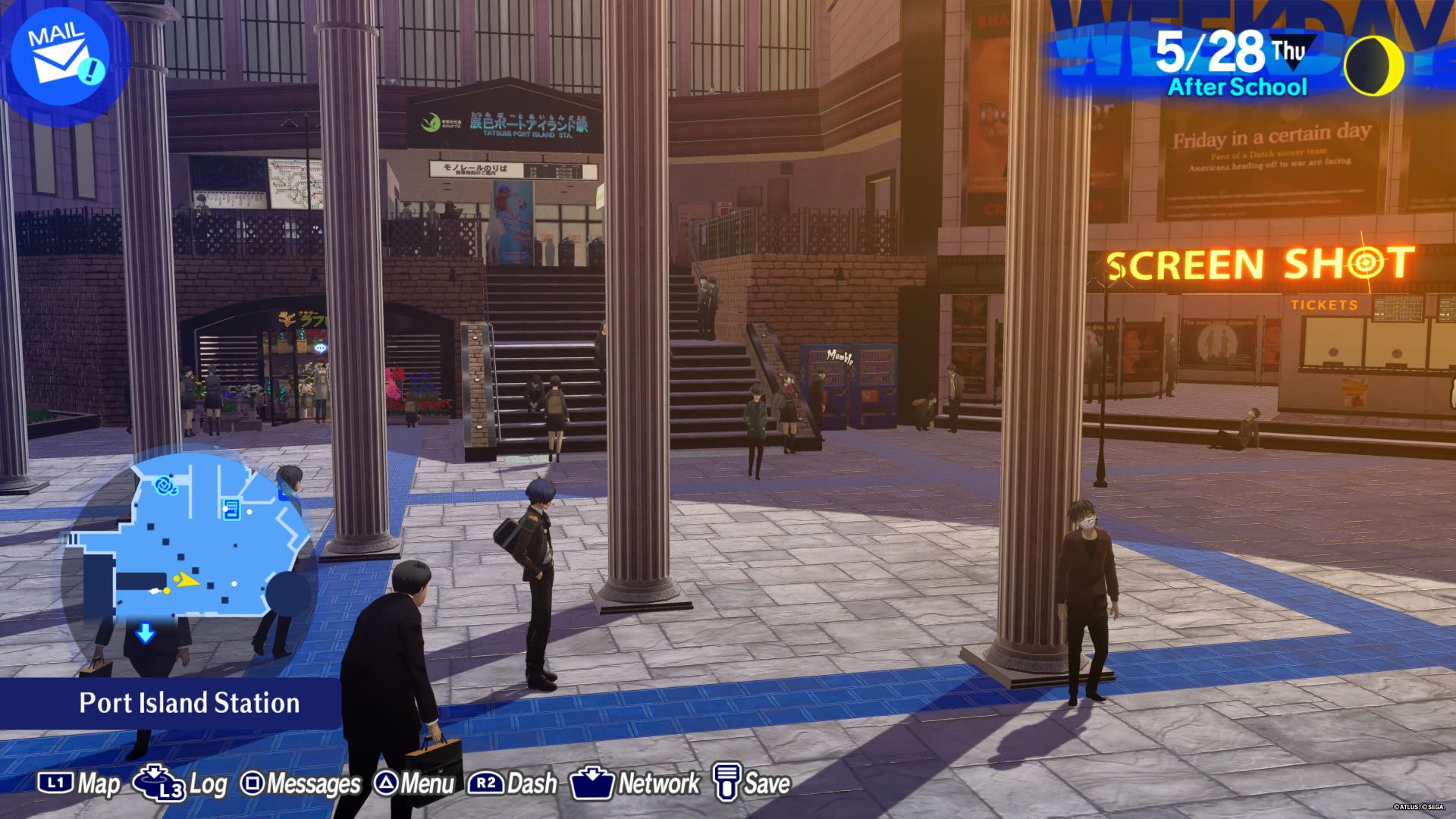
Naturally, this sense of style applies to the game’s phenomenal soundtrack. The intro theme, Full Moon Full Life, is an instant earworm, much like the ridiculously good battle theme, Mass Destruction. It’s hard to tell if Persona 3 Reload’s soundtrack ever reaches the same heights as Persona 5’s. Still, it certainly does an admirable job of imbuing every location with a sense of joy and intensifying the emotional core of each dramatic cutscene.
“If you played and loved any version of Persona 3, then I can guarantee you that Persona 3 Reload will be for you.”
There was a point while playing Persona 3 Reload when I wondered whether it was truly meant for me. I don’t mean in the sense that its genre, gameplay, narrative, or visuals didn’t appeal to me, for it all undeniably falls within my favorite aspects of gaming. Rather, I wondered if, as a remake of a game that I never played from nearly two decades ago, it really mattered whether I enjoyed it. I, of course, pushed on and thoroughly enjoyed the rest of my time. Persona 3 Reload is undeniably not only a great game but also a startling good remake that will surely come to define what a remake should be.
Nevertheless, it is deeply flawed, in large part thanks to the incredibly dull nature of Tartarus. Yet, each time I question its flaws, I’m once again confronted with the notion that Persona 3 Reload was not intended for players like myself. If you played and loved any version of Persona 3, then I can guarantee you that Persona 3 Reload will be for you. This is, without a doubt, a remake for you, and its reverence for the source material, coupled with its determination to improve upon its flaws, is absolutely a testament to that.
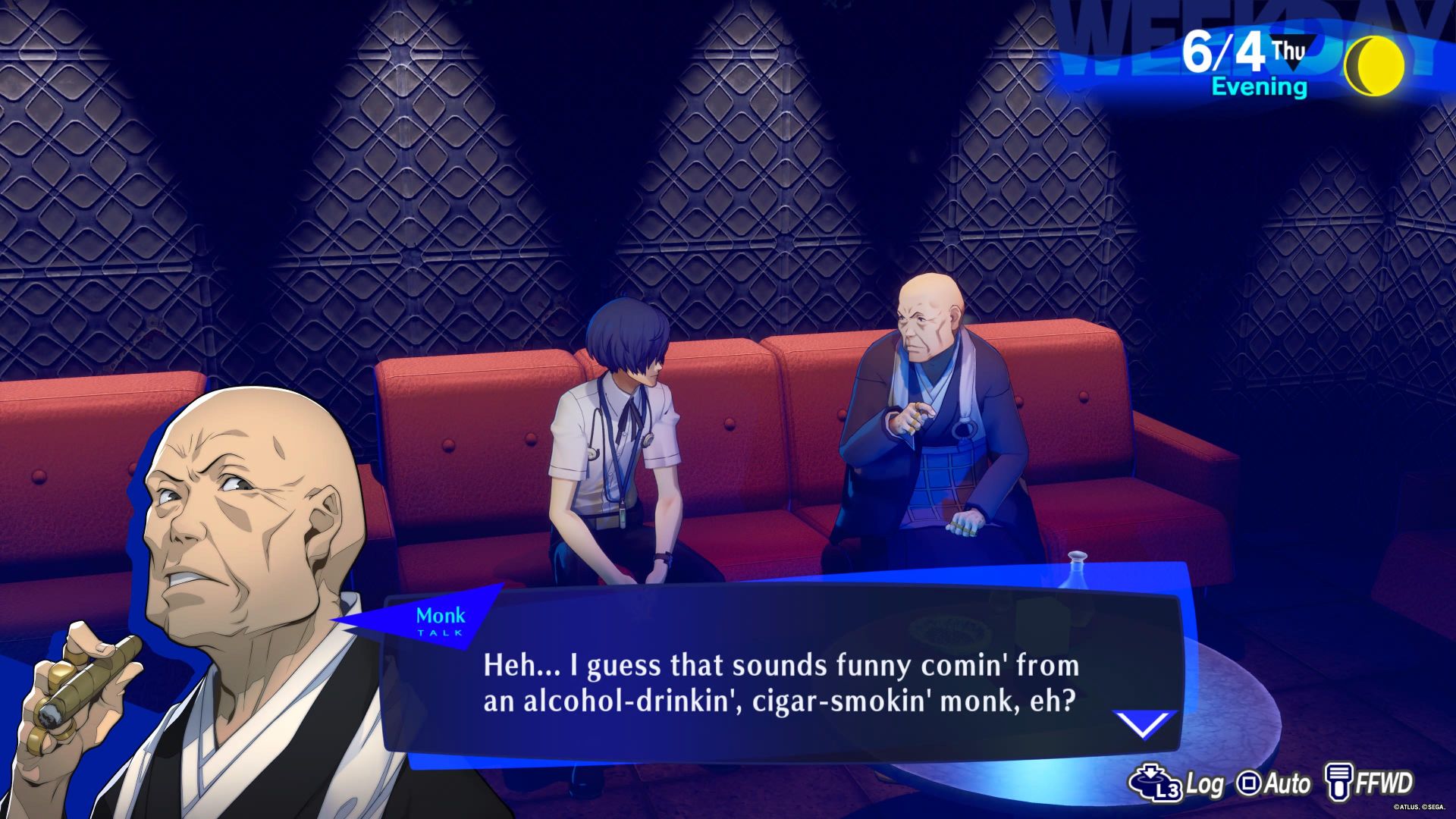
However, if you’ve never experienced Persona 3 or even a Persona game, then I still highly recommend Reload. I suspect this will become a fan-favorite among newcomers, much like Persona 5. The stunning visuals, complex narrative, great side content, phenomenal combat, and iconic soundtrack make Persona 3 Reload an excellent experience well worth having.
Disclosure: Game Crater was provided the game for this review. Some links provided in this article are affiliate links. Game Crater will be paid a commission if you use these links to make a purchase.


